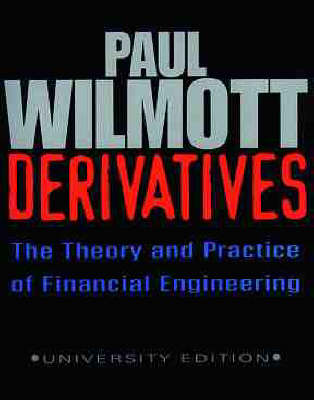Frontiers in Finance
2 total works
Derivatives by Paul Wilmott provides the most comprehensive and accessible analysis of the art of science in financial modeling available. Wilmott explains and challenges many of the tried and tested models while at the same time offering the reader many new and previously unpublished ideas and techniques. Paul Wilmott has produced a compelling and essential new work in this field. The basics of the established theories-such as stochastic calculus, Black-Scholes, binomial trees and interest-rate models-are covered in clear and precise detail, but Derivatives goes much further. Complex models-such as path dependency, non-probabilistic models, static hedging and quasi-Monte Carlo methods-are introduced and explained to a highly sophisticated level. But theory in itself is not enough, an understanding of the role the techniques play in the daily world of finance is also examined through the use of spreadsheets, examples and the inclusion of Visual Basic programs. The book is divided into six parts: Part One: acts as an introduction and explanation of the fundamentals of derivatives theory and practice, dealing with the equity, commodity and currency worlds.
Part Two: takes the mathematics of Part One to a more complex level, introducing the concept of path dependency. Part Three: concerns extensions of the Black-Scholes world, both classic and modern. Part Four: deals with models for fixed-income products. Part Five: describes models for risk management and measurement. Part Six: delivers the numerical methods required for implementing the models described in the rest of the book. Derivatives also includes a CD containing a wide variety of implementation material related to the book in the form of spreadsheets and executable programs together with resource material such as demonstration software and relevant contributed articles. At all times the style remains readable and compelling making Derivatives the essential book on every finance shelf.
Part Two: takes the mathematics of Part One to a more complex level, introducing the concept of path dependency. Part Three: concerns extensions of the Black-Scholes world, both classic and modern. Part Four: deals with models for fixed-income products. Part Five: describes models for risk management and measurement. Part Six: delivers the numerical methods required for implementing the models described in the rest of the book. Derivatives also includes a CD containing a wide variety of implementation material related to the book in the form of spreadsheets and executable programs together with resource material such as demonstration software and relevant contributed articles. At all times the style remains readable and compelling making Derivatives the essential book on every finance shelf.
This text provides an analysis of all aspects of derivatives and does not require a prior detailed knowledge of financial markets. In each chapter, the reader is first introduced to the market segment or particular product being discussed before having simple maths and market practice explained. Thereafter, issues of complex modelling are examined with, where applicable, visual basic code fragments (computer programming implementing the calculations and modelling covered) and screen dumps of spread sheets indicating the formula to be used. Each chapter is then rounded off with a summary section, further reading and some exercise questions.

